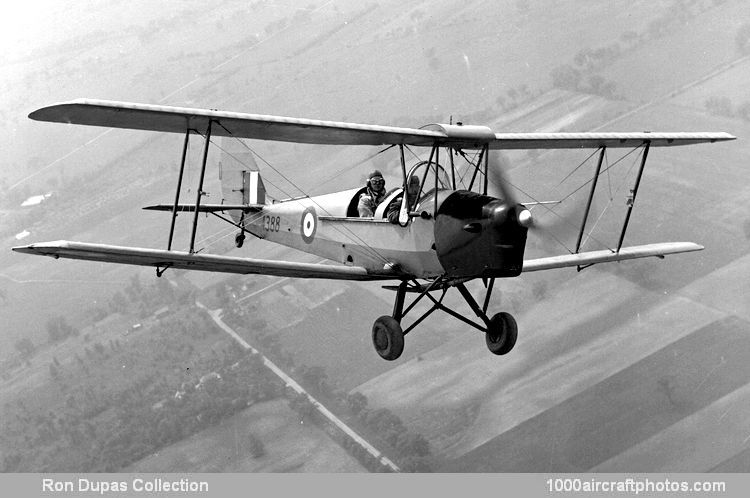08/22/2022. Remarks by Johan Visschedijk: "Following manufacture of the D.H.82As by de Havilland Canada, further engineering changes were introduced. The designation D.H.82B had already been used by the parent company for the Queen Bee target aircraft, hence the engineered version was designated D.H.82C.
The changes, to DND (Department of National Defence) specification AP/3/39, included the fitting of wheel brakes and a tail wheel. This required the wheels being moved forward about 9.75 in (24.7 cm) to prevent nosing over on brake application, and the front landing gear members were shortened to do this. American instruments, of smaller size than the original British, were installed which permitted a more logical instrument layout and a reduction in panel size which in turn permitted a reshaping of the coaming between the cockpits to improve the view from the rear cockpit. The 'cheese cutter' elevator trim was replaced by trim tabs controlled by a wheel in each cockpit. The elevators were mass balanced to compensate for the weight of the tabs. The RCAF also wanted a new type of cockpit canopy, jettisonable in an emergency and higher than that on the Canadian built D.H.82A. Also included was the fitting of the higher-powered 140 hp de Havilland Gipsy Major 1C engine.
The D.H.82C prototype, RCAF 4001, was first flown on March 12, 1940, at Downsview by J.B. Douglas. The various Canadian modifications added weight and, in some cases, drag, so inevitably the Canadian D.H.82C was less nimble than its British counterpart although better fitted for Canadian operations.
The pictured aircraft was taken on strength by RCAF No. 1 TC (Training Command) on February 13, 1941, February 25 it was issued to No. 1 EFTS (Elementary Flying Training School) at Malton, Ontario. On November 14, 1941, it suffered Category C damage and was repaired. From June 9 to September 4, 1942, it was overhauled by de Havilland Canada, thereafter it went into storage with No. 1 TC. On February 8, 1943, it was transferred to No. 3 TC for use by No. 4 EFTS at Windsor Mills, Province of Quebec.
Pending disposal the aircraft was initially with No. 3 TC from May 25, 1944, then with No. 1 Air Command from January 15, 1945, and was subsequently stored at No. 1 Aircraft Storage Unit at Cap de la Madeleine. With 1192:20 total time (480:55 since overhaul) the aircraft was struck off on February 8, 1945, and transferred to the War Assets Corporation for sale; its ultimate fate is unknown."
